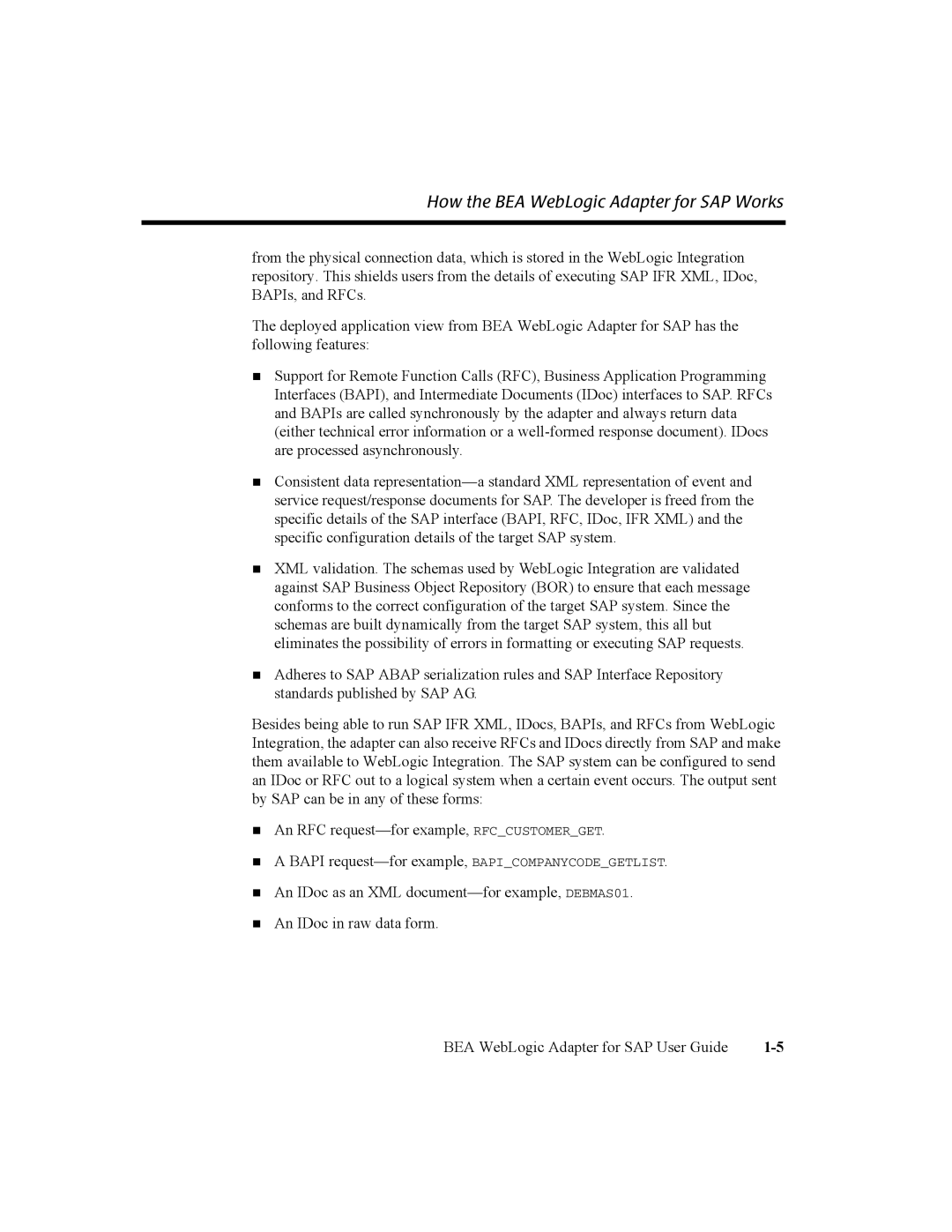How the BEA WebLogic Adapter for SAP Works
from the physical connection data, which is stored in the WebLogic Integration repository. This shields users from the details of executing SAP IFR XML, IDoc, BAPIs, and RFCs.
The deployed application view from BEA WebLogic Adapter for SAP has the following features:
Support for Remote Function Calls (RFC), Business Application Programming Interfaces (BAPI), and Intermediate Documents (IDoc) interfaces to SAP. RFCs and BAPIs are called synchronously by the adapter and always return data (either technical error information or a
Consistent data
XML validation. The schemas used by WebLogic Integration are validated against SAP Business Object Repository (BOR) to ensure that each message conforms to the correct configuration of the target SAP system. Since the schemas are built dynamically from the target SAP system, this all but eliminates the possibility of errors in formatting or executing SAP requests.
Adheres to SAP ABAP serialization rules and SAP Interface Repository standards published by SAP AG.
Besides being able to run SAP IFR XML, IDocs, BAPIs, and RFCs from WebLogic Integration, the adapter can also receive RFCs and IDocs directly from SAP and make them available to WebLogic Integration. The SAP system can be configured to send an IDoc or RFC out to a logical system when a certain event occurs. The output sent by SAP can be in any of these forms:
An RFC
A BAPI
An IDoc as an XML
An IDoc in raw data form.
BEA WebLogic Adapter for SAP User Guide |
